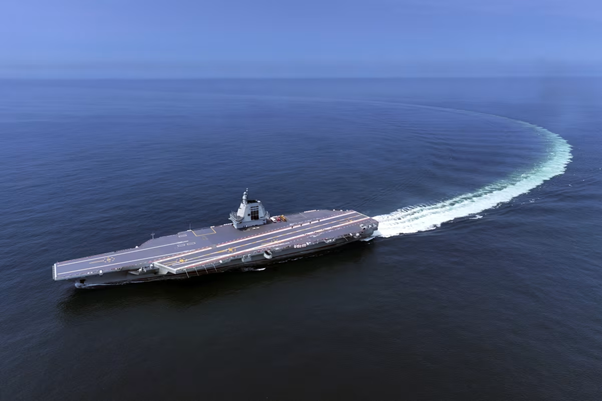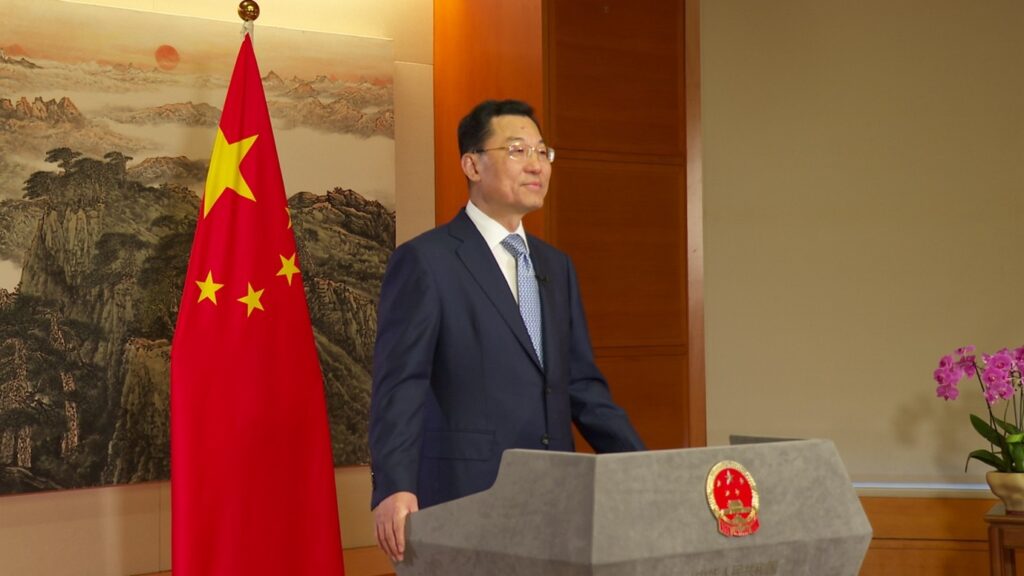China’s latest and most capable aircraft carrier, the Fujian, has officially entered into service, marking a significant step forward for Beijing in solidifying its position among global naval powers and catching up with the United States in terms of naval supremacy. The Fujian is China’s third and most advanced vessel, equipped with electromagnetic catapults (EMALS). This innovative technology allows planes to take off with heavier weapon and fuel loads, so they can strike enemy targets at greater distances, making it more powerful than China’s first two Russian-designed carriers, the Liaoning and the Shandong.
The Fujian entered service on Wednesday in Hainan province at a grand ceremony, which is considered the greatest achievement of China’s military modernization. This event makes China the second country in the world, after the US, to operate an aircraft carrier equipped with EMALS technology. It is also the world’s largest conventionally powered warship, underscoring China’s engineering achievements.
President Xi Jinping personally attended the commissioning and flag-presenting ceremony at a military port in Sanya. Xi Jinping inspected the vessel and was informed about its capabilities and performance data. According to state media, Xi Jinping personally made the decision to adopt the electromagnetic catapult technology.
According to Zhang Junshe, a Chinese military expert, the transfer of Fujian to the naval fleet conditions the shift of the PLA Navy forces from coastal defense to far seas defense, with which China officially enters the era of three aircraft carriers. According to him, this step grants the fleet several key advantages. First of all, aircraft can take off with full fuel and ammunition, which increases the combat radius. In addition, the frequency of aircraft launch from the carrier significantly increases. Experts suggest that Fujian and Shandong may be deployed in the same port facing the South China Sea. This will facilitate the creation of a dual-carrier group and strategically deter the forces advocating for “Taiwan independence.”
Although China has the world’s largest navy in terms of the number of ships, and the Fujian, with a mass of 80,000 tons, is the closest thing afloat to the US Navy’s Nimitz-class carriers, analysts say it still has a difficult path ahead before achieving full operational readiness. Because it is conventionally fueled (diesel-powered), the Fujian has a limited operating range, unlike the nuclear-powered carriers of the US. Experts estimate that due to the configuration of the flight deck, its air operations rate may only be 60% compared to what a 50-year-old US aircraft carrier achieves. China is already building a fourth carrier, which is expected to be nuclear-powered and also employ EMALS technology.
Author: Mariam Macharashvili




